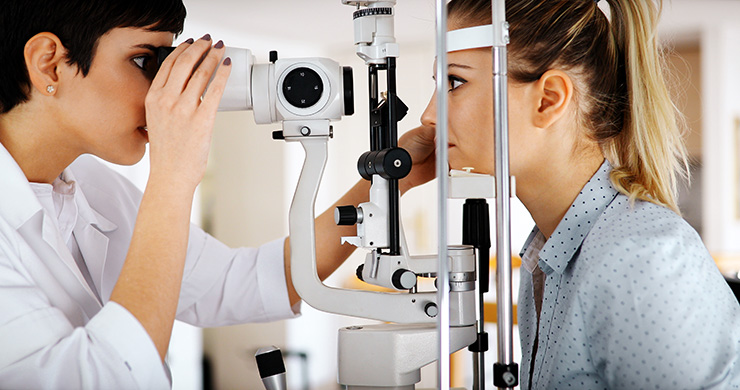How an Eye Doctor Can Help Prevent Vision Complications in Chino
How an Eye Doctor Can Help Prevent Vision Complications in Chino
Blog Article
Discovering the most up to date Technical Developments in Optometry and What They Mean for Optometrists
From the precision of Optical Coherence Tomography to the nuanced insights used by AI-driven analysis devices, these advancements are establishing new standards in person evaluation and therapy. As these developments penetrate the technique, optometrists are encountered with the difficulty of welcoming these devices to improve patient end results.
Innovations in Diagnostic Equipment
Progressing the field of optometry, innovations in diagnostic devices have actually transformed the way eye care specialists assess and detect ocular problems and visual disabilities. The previous years has actually experienced significant technological developments, enabling more precise and detailed assessments.
One more secret innovation is the introduction of advanced corneal topography systems, which map the surface area curvature of the cornea with precision. These devices are specifically useful for suitable get in touch with lenses and detecting corneal disorders. Electronic retinal imaging has actually changed conventional ophthalmoscopy, using comprehensive, breathtaking views of the retina that help with extensive visual examinations.
The growth of wavefront aberrometry has additionally been critical, making it possible for the evaluation of refractive errors with unequaled precision (Optometrist Chino). This modern technology helps in tailoring corrective lenses and enhancing medical end results for refractive surgeries. Jointly, these diagnostic improvements equip eye doctors to provide premium individual care, ensuring early treatment and tailored treatment methods, inevitably boosting visual health and wellness results
AI in Person Administration
Structure on the structure of advanced diagnostic tools, the unification of synthetic knowledge (AI) in client management stands for a transformative leap for optometry. AI systems are significantly used to boost effectiveness, precision, and personalization in person care.
Additionally, AI-driven platforms facilitate streamlined patient communications and administrative processes. Automated scheduling, digital examinations, and customized follow-up strategies not just improve client complete satisfaction but likewise maximize time management for professionals. These systems can triage patients based on the necessity of their conditions, ensuring that those in vital requirement obtain timely interest.
Furthermore, AI boosts decision-making by giving eye doctors with evidence-based recommendations and treatment paths. By incorporating data from electronic wellness documents, AI devices use insights that notify medical choices, lowering the threat of errors and enhancing person results. As AI remains to evolve, its duty in client monitoring will likely increase, reshaping the landscape of optometric treatment.
Developments in Retinal Imaging
In the world of optometry, retinal imaging has actually experienced exceptional technological improvements that are improving analysis capabilities and patient care. Developments such as Optical Comprehensibility Tomography (OCT) and fundus digital photography have transformed just how optometrists envision and evaluate the retina.
Boosted imaging modalities like OCT angiography are further refining analysis precision. Eye Doctor. Such improvements facilitate the recognition of min retinal click site modifications that might represent condition progression.
In addition, improvements in expert system are augmenting retinal imaging by making it possible for automatic analysis of large datasets. These systems aid eye doctors in identifying patterns a sign of pathology, consequently boosting diagnostic precision and effectiveness. Collectively, these technologies are changing retinal imaging right into a keystone of modern eye treatment, improving results and broadening healing opportunities.
Teleoptometry's Expanding Duty
Teleoptometry is progressively coming to be a vital element of eye care, driven by advancements in electronic communication and diagnostic devices. This is particularly beneficial in underserved and rural areas where access to specialized eye care is frequently limited.
The assimilation of expert system (AI) additional boosts teleoptometry, enabling the analysis of visual information and assisting in the detection of ocular conditions such as glaucoma and diabetic retinopathy. AI-powered formulas can quickly interpret intricate imaging information, providing eye doctors with valuable insights that strengthen medical decision-making.
Additionally, teleoptometry supports connection of treatment with smooth combination with electronic health and wellness documents (EHRs), allowing optometrists to keep detailed person backgrounds. This guarantees that people receive customized and consistent treatment also when talking to various professionals.
Despite these advantages, challenges remain, including ensuring information protection and managing client assumptions. Teleoptometry represents a considerable stride towards more easily accessible, reliable, and patient-centered eye care. As technology develops, its duty is positioned to broaden better.

Future Fads in Eye Treatment
A myriad of cutting-edge patterns is readied to improve the future of eye care, driven by technical advancements and the progressing demands of clients. One significant fad is the assimilation of synthetic knowledge (AI) in diagnostics, which assures to improve the precision and performance of eye evaluations. AI formulas can examine vast amounts of information from retinal images, potentially detecting conditions like diabetic retinopathy and glaucoma earlier than conventional techniques.
Furthermore, customized medicine is obtaining traction in optometry, with genetic testing educating tailored treatment strategies. This approach aims to enhance individual end results by customizing interventions to specific genetic accounts. Wearable technology, such as wise get in touch with lenses, is additionally coming find out here up, offering real-time monitoring of intraocular stress or sugar levels, therefore offering continuous understandings into ocular and systemic health.
The fostering of increased reality (AR) and virtual truth (VR) in training and individual education is an additional emerging fad. These innovations provide immersive experiences that can enhance understanding and abilities both for people and eye doctors. As these trends advance, eye doctors need to remain abreast of technological innovations to supply innovative care, making certain enhanced client results and contentment in the dynamic landscape of eye treatment.
Verdict

Collectively, these analysis innovations equip eye doctors to provide premium person care, making sure very early intervention and customized therapy approaches, inevitably enhancing visual wellness outcomes.

As these technologies proceed to evolve, optometrists must adjust and include them into technique, ultimately enhancing operations efficiency and boosting the standard of eye care provided to clients.
Report this page